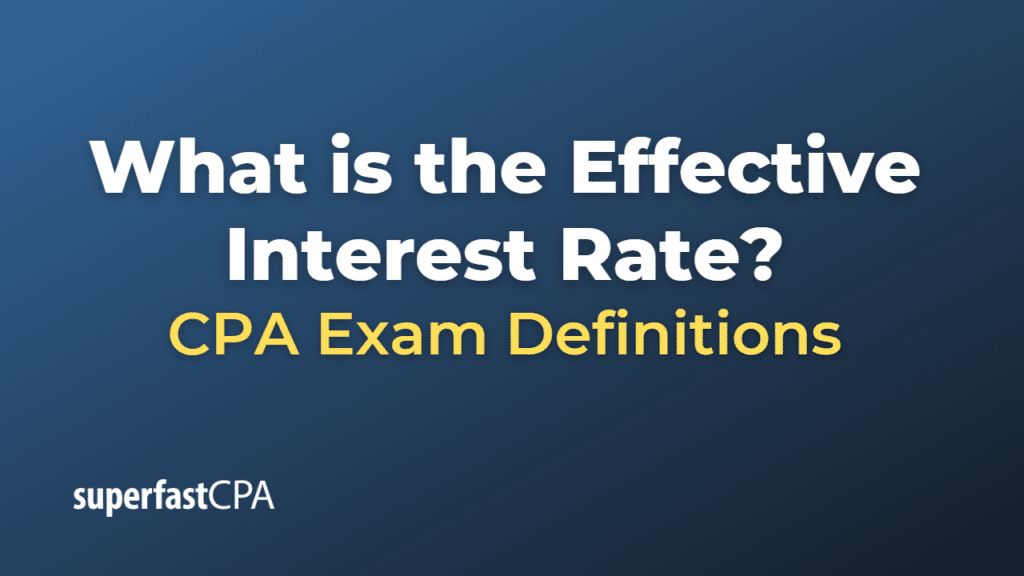Effective Interest Rate
The effective interest rate, also known as the annual equivalent rate (AER) or the annual percentage yield (APY), is the interest rate that actually gets paid on a loan or investment, which can differ from the stated or nominal rate due to compounding.
The effective interest rate takes into account the effects of compounding, which is the process of earning interest on both the initial amount of money deposited or borrowed (the principal) and the interest that has previously been added to it.
It provides a more accurate measure of the cost of borrowing or the yield of an investment because it represents the true annual return, taking compounding into account.
The formula to calculate the effective interest rate is:
\(\text{Effective Interest Rate} = \left(1 + \frac{i}{n}\right)^{nt} – 1 \)
Where:
- i = the nominal interest rate
- n = the number of compounding periods per year
- t = the time the money is invested or borrowed for, in years
The more frequently interest is compounded within a given time period, the greater the effective interest rate will be. For example, an investment with an annual interest rate of 6% compounded semi-annually will have a higher effective interest rate than if it were compounded annually.
It’s important to note that in consumer finance, in many countries, lenders are required to disclose the effective interest rate to borrowers so they fully understand the true cost of borrowing.
Example of the Effective Interest Rate
Let’s say you deposit $1,000 in a savings account that pays a nominal interest rate of 5% per year. However, the interest is compounded quarterly. We can use the formula for the effective interest rate to find out what your actual rate of return will be.
The nominal interest rate (i) is 5%, or 0.05 when expressed as a decimal. The number of compounding periods per year (n) is 4 because the interest is compounded quarterly. We’ll assume you’re keeping the money in for one year (t = 1).
So the formula becomes:
\(\text{Effective Interest Rate} = \left(1 + \frac{i}{n}\right)^{nt} – 1 \)
\(= \left(1 + \frac{0.05}{4}\right)^{4*1} – 1 \)
\(= \left(1.0125\right)^{4} – 1 \)
\(= 1.051 – 1 \)
\(= \text{0.051 or 5.1%} \)
So the effective interest rate on your savings account is 5.1%, which is higher than the nominal rate of 5% due to the effect of quarterly compounding. This means that at the end of the year, instead of having $1,050 in your account as you would if interest were compounded annually, you’ll have $1,051.
Remember, this is a simplified example. In practice, interest might be compounded on different schedules, such as daily or monthly, which would result in a slightly higher effective interest rate.













